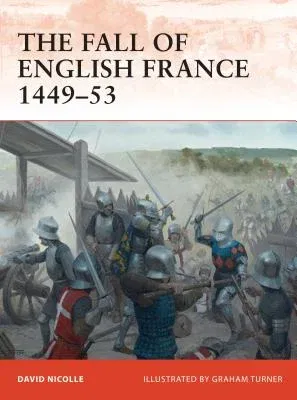For the overwhelming majority of people outside the French-speaking
world the Hundred Years War consisted of a sequence of major English
victories, above all Crécy, Poitiers and Agincourt. The only significant
victor or 'hero' on the French side was Joan of Arc, and she ended up
being burned at the stake. Yet somehow the war ended in a French victory
and with England's martial energies being turned against itself in the
Wars of the Roses. This book is intended to provide some balance. It
will describe the campaign that brought the Hundred Years War to a
close, with English possessions being confined to Calais and the Channel
Islands. It will also explain how the somewhat unprepossessing and
unmartial King Charles VII of France succeeded where his predecessors
had failed. The campaign consisted of more than battles, of course, but
it was marked by two major victories - at Formigny in 1450 and at
Castillon in 1453. Formigny is of special interest because it saw French
cavalry defeat English archers, in effect a reversal of Crécy, Poitiers
and Agincourt, and could be interpreted as one of the last 'medieval'
battles. Castillon is of interest because it was a victory of gunpowder
artillery in fixed positions over a traditional medieval assault by
mixed infantry and cavalry, and thus could be interpreted as one of the
first 'modern' battles.

